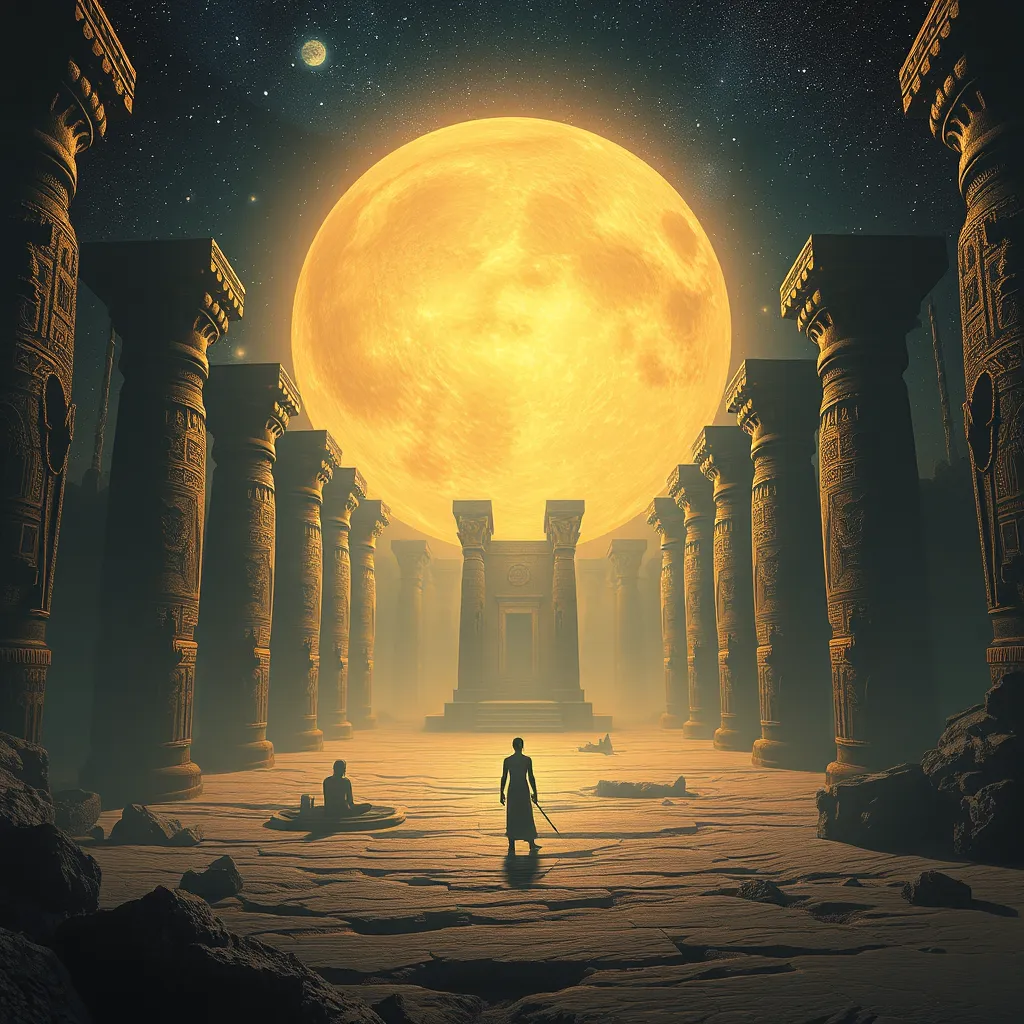The Duat: A Realm of Spiritual Exploration
I. Introduction to the Duat
The Duat, often referred to as the realm of the dead in ancient Egyptian cosmology, holds profound significance in the understanding of the afterlife and the spiritual journey of the soul. It is depicted as a complex, multi-layered world where the deceased navigate through various landscapes, facing trials and tribulations that ultimately determine their fate in the afterlife.
In essence, the Duat serves as both a passage and a destination. It symbolizes the journey every soul must undertake after death, reflecting the ancient Egyptians’ beliefs about life, death, and rebirth. This mystical realm is not merely a place of judgment but also a representation of the eternal cycle of life and death that permeates their religion.
II. Historical Context of the Duat
The origins of the Duat can be traced back to the early phases of ancient Egyptian religion, where it was first articulated in pyramid texts as a place of transition for the deceased. Over the centuries, beliefs surrounding the Duat evolved significantly, reflecting changes in religious practices and societal norms.
During the Old Kingdom, the Duat was primarily viewed as a dark, chaotic realm that souls would traverse. However, as Egyptian society progressed through various dynasties, the concept of the Duat became more nuanced, incorporating ideas of resurrection and eternal life, particularly under the influence of the Osirian myth.
III. The Structure of the Duat
The Duat is described as a vast and intricate landscape, comprising various regions that represent different aspects of the afterlife. Some of the key features include:
- Dark Waters: Representing the chaotic elements of the universe.
- Fields of Iaru: A paradisiacal realm where souls enjoy eternal bliss.
- Hall of Judgment: The critical location where the deceased are judged by Osiris.
Additionally, the Duat is often depicted as having multiple gates and barriers, which souls must navigate to reach their final destination. These landscapes feature both familiar earthly elements and fantastical, otherworldly components, signifying the transition from life to the afterlife.
IV. Deities and Entities of the Duat
The Duat is populated by a variety of gods and goddesses, each playing a unique role in the spiritual journey of the deceased. Some major figures include:
- Anubis: The jackal-headed god of mummification and the protector of graves, Anubis guides souls through the Duat.
- Osiris: God of the afterlife, Osiris presides over the Hall of Judgment, where he weighs the hearts of the deceased against the feather of Ma’at.
- Isis: Osiris’s wife, who plays a crucial role in the resurrection of her husband and the protection of souls.
These deities embody various aspects of the afterlife and guide the souls through the challenges they encounter, ensuring that they remain on the right path toward resurrection and eternal life.
V. The Journey Through the Duat
The journey through the Duat is depicted as a perilous adventure, fraught with challenges that the deceased must overcome to achieve eternal life. Upon death, the soul begins its journey through the Duat, which includes several key stages:
- Crossing the Waters: The soul must navigate the treacherous waters of the Duat, often portrayed as a dark river filled with dangers.
- Facing Monsters: Various monstrous entities, such as serpents and demons, pose threats to the soul, requiring it to demonstrate courage and wisdom.
- Entering the Hall of Judgment: Here, the heart of the deceased is weighed against the feather of Ma’at. A balanced outcome signifies a pure soul, allowing passage to eternal peace.
Success in navigating these trials leads to rebirth and union with the divine, while failure results in dismemberment or eternal torment.
VI. Symbolism and Imagery in Duat Art and Texts
The Duat has been richly depicted in ancient Egyptian art and literature, providing insight into the beliefs and values of the civilization. Tomb paintings and inscriptions found in burial sites serve as a guide for the deceased on their journey.
Common symbols associated with the Duat include:
- Feather of Ma’at: Represents truth and justice.
- Key to the Duat: Symbolizes access and passage through the realm.
- Lotus Flowers: Signify rebirth and regeneration.
These symbols are not just artistic expressions but are deeply embedded with spiritual meanings, illuminating the ancient Egyptians’ understanding of life, death, and the afterlife.
VII. The Duat’s Influence on Modern Spirituality
Despite being rooted in ancient beliefs, the concept of the Duat continues to resonate in modern spiritual practices and interpretations of the afterlife. Many contemporary spiritual movements draw inspiration from ancient Egyptian mythology, seeking to understand the journey of the soul and the nature of existence.
The Duat’s emphasis on the journey through trials can be seen in various modern spiritual teachings that advocate for personal growth through challenges. Furthermore, the idea of a moral judgment after death echoes in many religions today, reflecting a universal quest for understanding the consequences of one’s actions.
VIII. Conclusion
In summary, the Duat serves as a profound symbol of spiritual exploration in ancient Egyptian culture, representing the complexities of the afterlife and the eternal journey of the soul. Its rich tapestry of myths, deities, and symbolic imagery continues to captivate and inspire, highlighting the ancient Egyptians’ deep understanding of life and death.
As we reflect on the legacy of the Duat, it becomes clear that its teachings about resilience, moral integrity, and the nature of existence remain relevant, offering valuable insights into our own spiritual journeys today.




